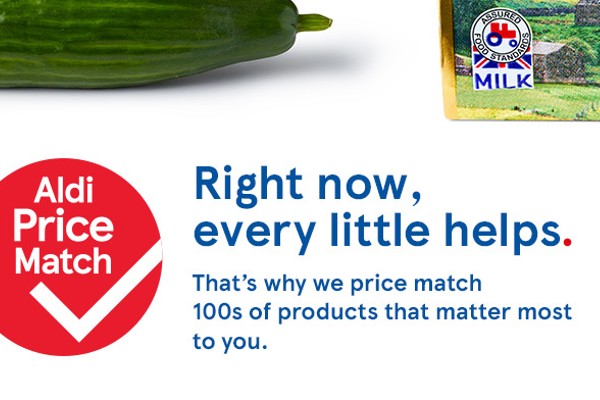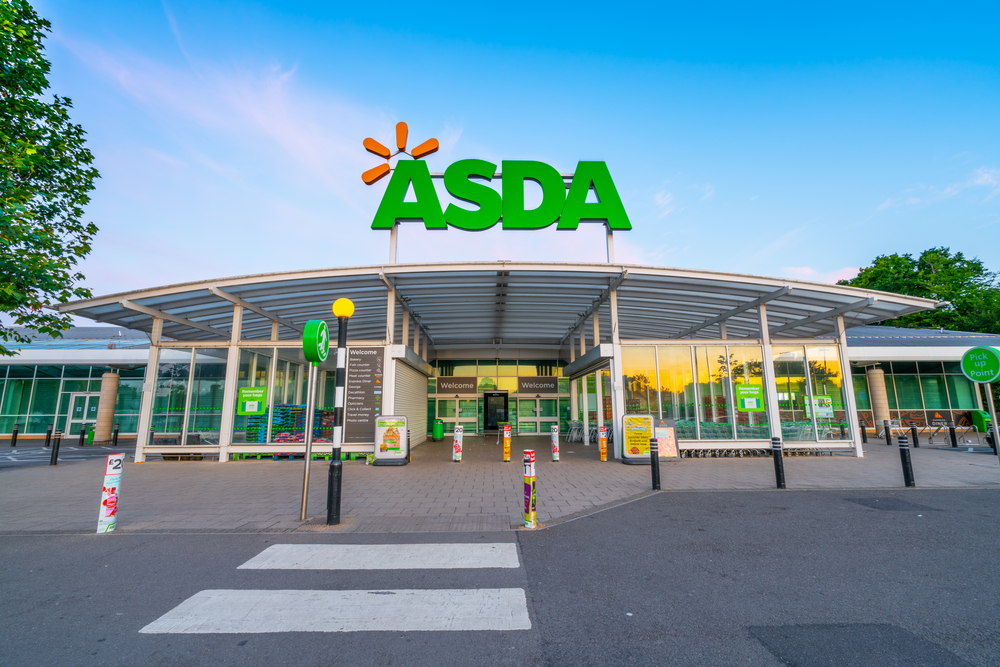The UK is in the grip of a severe cost-of-living crisis that’s being driven by record inflation, which jumped 9% year-on-year in April – the highest rate for 40 years.
Costs are rising across the board, from food and energy to commodities and fuel. This is not just hitting consumers but retailers too, with the cost of doing business soaring.
Retailers from fashion to electricals to food are being forced to raise prices but with shoppers’ budgets increasingly squeezed, doing so comes with substantial risk.
“The rising cost of living is affecting almost all households and retailers are now looking to select the right value strategy for their business, to retain cost conscious consumers,” says Duncan Brewer, partner at EY’s strategy consultancy EY-Parthenon.
Before making any decisions on price rises, retailers need to understand how their specific customer will be affected by inflation, warns Brewer.
“Every consumer is different. Without knowledge of how their customers will be affected, a retailer will be unable to understand how much of the cost rise they can pass on to their shoppers without driving them into the arms of a competitor,” he says.
Brewer says the next step is to understand how much of the cost can be mitigated. “While most of the cost rises are inevitable, there are still actions retailers can take to reduce their cost base,” he says.
Most retailers will be working with their supply base to find efficiencies, however, Brewer suggests actions such as range rationalisation, which will cut supply chain costs, and reformulating own-brand products to find cheaper ways to create items.
Product reformulation is an approach used by FMCG giant Unilever to minimise costs.
When it comes to cost rises that can’t be mitigated, retailers need to be “very smart” about understanding the elasticity of different products and customers, and “price rises should be tailored to where they will have the least negative impact”.
The price strategies of the big supermarkets
There are many different value strategies retailers can take, and a quick glance at the fiercely competitive supermarket sector, which is extremely price sensitive, shows this in action.

Inflation is taking its toll in the sector; Kantar found that grocery prices saw the biggest increase since December 2011 last month, up 5.9% year on year.
This is set to worsen as Marks & Spencer chairman Archie Norman warned last week that food prices could rise by as much as 10% this year.
In light of soaring prices, shoppers are turning to Aldi and Lidl. To stop the stampede to the discounters, the Big Four have pushed ahead with various pricing strategies to boost their own value credentials.
“Supermarkets are making different decisions on price versus promotions; some are continuing to emphasise their promotion deals, whilst others are highlighting lower prices across their ranges,” Brewer says.
To still appear good value for money, despite prices across the sector rising, grocers have focused on keeping prices low where they deem it to matter most.
At Tesco, three main levers are being pulled around pricing: Aldi Price Match, Low Everyday Prices and Clubcard Prices.
Aldi Price Match vows to meet the low prices of the discounter – one of its big rivals for shoppers right now – across hundreds of items. Since launching in March 2020, Aldi Price Match now covers 650 of the most commonly bought grocery products, which feature in 99% of weekly baskets at Tesco.
Meanwhile, Low Everyday Prices keeps the prices of essentials down, rather than running copious promotions. A Tesco spokesperson told Retail Gazette in the past week alone, it had added 100 products to its Low Everyday Prices.
Perhaps the most interesting tactic taken by Tesco is its Clubcard Prices, whereby it gives its loyalty members exclusive prices on items.
Retail analyst Richard Hyman believes that giving loyal shoppers better prices is a smart move. “Retailers spend far too much time and effort chasing promiscuous shoppers, by focusing on loyal customers and giving them a better price and service, Tesco may have nailed it.”
Brewer adds: “Whilst relatively few customers won’t have loyalty cards, this tactic separates out customers who are less sensitive to price, and charges them a small premium. The individual values may be small, but this will add up over the whole business.”
The three price strategies combined have appeared to cut through. Over the past the years, Tesco’s value perception has risen 483 basis points, outperforming the market by 91bps during that time period.
Tesco boss Ken Murphy is confident its approach enough to keep customers shopping at Tesco as inflation bites. “We offer no reason to go anywhere else other than Tesco from a price competition point of view, and we are going to make sure you get a great quality product at that price,” he says.
“Through the low everyday prices model, we can take away the need to go to a Home Bargains or a B&M for your household products or your health and beauty products because you’ll get them just as cheaply at a Tesco.”
Sainsbury’s pricing strategies mirror Tesco’s, with an Aldi Price Match scheme across 240 products – significantly less than Tesco’s 650 items – a Price Lock promotion that fixes the prices of up to 2,000 items for at least eight weeks, and My Nectar Prices, which offers loyalty card holders personalised discounts.
Elsewhere in grocery, both Morrisons and Asda have opted for targeted price cuts.
Asda last month ‘dropped and locked’ the price of over 100 family favourites and will keep price low until the end of the year. On average, prices will fall by 12%.
Meanwhile, it has launched a new value range Just Essentials, to woo cost-conscious shoppers, and like Tesco and Sainsbury’s has launched a price match campaign. However, rather than taking aim at Aldi, Asda has vowed to match Home Bargains, which is increasingly snatching trade from the grocers.
Morrisons, which appears to be one of the biggest losers from consumers trading down with Kantar data showing the retailer’s sales fell 11.5% in the three months to 21 March, has taken action to quell this by dropping prices on 500 products, including eggs, beef and nappies, last month.
The rise of ‘shrinkflation’
Another strategy evident, particularly in the grocery and discount sector, is shrinking product sizes and keeping prices the same.
Consumer rights group Which? Found that Nescafé Azera Americano decaff instant coffee shrank from 100g to 90g in Tesco in February this year but its price remained at £5.49. That is an effective price increase to shoppers of 11% per 100g.
Similarly, Walkers Classic Variety Crisps went from 24 bags in a multipack to 22 at Tesco, Asda and Morrisons last autumn, but stayed the same price.
Brewer says that while reducing product size is attractive in the short-term, “customers quickly work out that they’re being ‘short-changed”, which can do long-lasting damage to brand perception.
The importance of own brand
These myriad pricing tactics are being harnessed elsewhere in the industry where price pressures are also fierce.
Superdrug chief commercial officer Simon Comins tells Retail Gazette: “We, like every retailer at the moment, are facing pressures to raise prices. Some of these price rises, especially across branded products are out of our control.”
Comins says this makes Superdrug’s own brand increasingly important. “Our own brand offering has always been an important focus for us and more now than ever we see that people are opting to shop quality own brand items over branded products in an effort to save money.
“We recently spoke to some of our customers and 80% said that they are starting to change their shopping habits in an effort to combat the rising price hikes.
“92% of shoppers asked said that they would consider switching to own-brand products in light of the current climate and so we have been working behind the scenes to make quality own-brand products at a competitive price to give our customers little luxuries at lower prices.”

In April, Superdrug also introduced a price freeze for a year on over 100 own-brand products, which Comins says gives its customers “peace of mind”. He adds that Superdrug plans to add more products to its price freeze “very soon”.
Can retailers keep prices static?
In the face of rising inflation, is it possible for any retailer to freeze prices? The experts think not.
Brewer says: “The reality is that the scale of price rises are such that very few retailers have sufficient gross margin, let alone net margin, to enable them to take the hit to their margin.
“We expect to see almost all players increase prices, either through high prices for the same product, or through shrinkflation.”
However, fashion retailer Weird Fish has seemingly done the impossible and frozen prices this year.

The retailer’s customer director Ben Mercier says it has made the move to protect and grow its market share.
Mercier says to make the price freeze a reality it has to “watch costs like a hawk, and work in close partnership with our suppliers to ensure the most efficient and effective supply chain possible”.
However, the retailer has made life easier for itself by creating a raft of new products.
“New products give us more flexibility in terms of pricing as there are no comparatives and we can align to market,” explains Mercier. “From our in-depth research on shopping habits, we know that customers are happy to spend a bit more on new products.”
Although the upside of Weird Fish’s strategy is the new market share and customer acquisition it can gain from maintaining its low pricing, Mercier admits that it must constantly monitor customer sentiment and “be prepared to act” if demand is softer than anticipated.
Mercier says: “We will reassess our strategy later down the line as market conditions continue to change.”
It is a risky approach as costs continue to soar for retailers. Primark, which had vowed to to lock prices in spring summer, has admitted it will implement “selective price increases” in autumn/winter.
Despite this, Primark still expects its full-year margin to be hit. In the first half, its margin was 11.7% but the fashion retailer expect this to come in at around 10% for the full year.
A Primark spokesperson told Retail Gazette that the retailer is “not giving up” offering everyday essentials at “the best value of the high street”.
With price rises a reality for most retailers, it is essential that retailers prove that they offer good value for money, and as Brewer points out, this comes down to more than just price.
He says: “While there are always shoppers that buy purely on price, most look for the best trade-off for them of ‘what they pay’ and ‘what they get’.
“It is therefore important that retailers have consistent messaging about the quality and price trade-off that the retailer offers.”
Those that get this right, and convince shoppers that their products are still good value for money – even if they are slightly more expensive – are primed to weather the inflationary storm.
Click here to sign up to Retail Gazette‘s free daily email newsletter


















